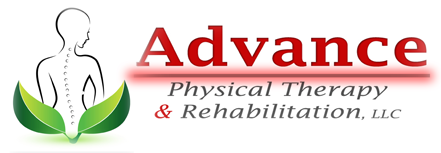
19 Jan Computers Are a Pain in the Neck, Literally
Every year, almost one in three individuals experience a neck problem. Women and older adults have an increased risk of back and neck health issues, as do people with whiplash injuries arising from car accidents.
One of the leading causes of these ailments is sitting for too long while working in front of a computer screen. Neck pain from computer use is debilitating at the best of times, especially when it hinders important work or critical screen time.
For a more comfortable computer experience, our experts have compiled these tips from top picks and related articles about why your body pain is an advertisement for poor screen use. We’ll also let you know what you should do to relieve these conditions.
How Sitting at Your Desk Causes Neck Pain From Computer Use
While some amount of stress is understandable when working sedentary long hours, excessive neck pain comes from forcing your posture to fit your desk setup rather than the other way around.
Straining to see a poorly placed computer monitor or sitting improperly in your chair can drastically increase pain during and after work.
A person’s head usually weighs around 12 pounds. It is supported by the muscles in the back. When you bend your neck to view an important topic on your awkwardly placed monitor, strain to read a newsletter on your desk, or twist around to see the topic of your latest cell phone message, all the weight of your head transfers to your neck.
At a 45-degree angle, this movement can result in almost fifty pounds of force compressing your neck muscles, often causing what is referred to as “text neck.”
Ways to Stop Head, Neck and Shoulder, and Back Pain from Computer Use
Everyone wants to keep their body in the best shape possible, but it can be difficult to reduce the time you spend in front of a screen, especially if your work demands it. Use these strategies to make sure you can keep working without a headache.
Fix Your Posture
Poor back and neck posture are the biggest factors causing pain in front of a screen. You should not sit at an exact 90-degree angle, but your body should be straight with a posture that follows the natural curve of your spine (rather than slouching).
Keep your eyes looking straight ahead and avoid bending your neck whenever possible.
If you are having trouble determining if you are working in a healthy position, ask for help from other people. A coworker can either give you tips by assessing your posture from a different perspective or taking a picture so that you can see if your shoulders and back are properly aligned.
You can also improve your work conditions with products such as a posture-promoting document holder.
Change Your Workspace
Badly arranged desks make it difficult to maintain good posture. One of the best ways to prevent neck or shoulder pain is to improve the ergonomics of your workstation.
When working at a desktop computer or similar device, adjust the monitor or your chair height so that the top of the computer screen is at eye level while looking straight ahead.
If you have trouble reading the content in your inbox, move the screen as you need. Try increasing the font size or dimming the backlight, too.
While working on a laptop, connect it to a larger monitor whenever possible to avoid tilting your chin down. You should also position your mouse and keyboard at a desk height that allows your arms to rest at a 90-degree angle, with forearms parallel to the floor.
Keep frequently used items nearby to avoid stretching awkwardly, and use a headset if you need to regularly speak over the phone. You can also use a document holder to reduce the amount of time spent with your head down.
Lastly, your office chair should allow you to keep an upright position and maintain the normal curves of your spine. Keep your feet on the ground or use a footstool to keep the chair elevated. Your knees should be a few inches away from your chair, and you should remove or adjust the armrests to allow your shoulders to rest comfortably.
Take Regular Breaks
Even with excellent posture and a comfortable workstation, sitting for hours at a time while staring at a flickering inbox content takes a toll on your health. Set an alarm for every 30 minutes as a reminder to stand up, move away from your screen, and walk around. Stay efficient by using these breaks to take phone calls or deliver messages.
Experts also suggest using the 20/20/20 rule to reduce the strain on your eyes. After 20 minutes of work, focus on an object at least 20 feet away from your screen. The break only needs to last for 20 seconds.
It is a quick way to refresh yourself throughout the day.
Use Desk Exercises
You may start to feel neck and back pain but still need to stay in front of your screen. There are simple exercises you can do while still sitting at your desk to relieve your discomfort.
One technique is to pull your arms backward with your fingers down until your hands rest on your glutes. You can do this while sitting or standing. Then, bring your shoulder blades together and hold this position to relax the strain in your back and shoulders.
Other Methods
If you have tried everything and still experience frequent shoulder and neck pain while working at your computer, you may need to consider techniques away from your desk. For example, there are low-impact exercises, such as Tai Chi, to ease the pain in your muscles and improve your range of motion. Many people have also relieved their pain and headaches using acupuncture, which inserts thin needles into the skin at pressure points.
Physical therapy and related health care also help if your neck pain becomes a chronic condition. These health professionals use non-invasive treatment to rehabilitate patients with injuries, back pain, and mobility issues.
At Advance Physical Therapy & Rehabilitation, our physical therapists have extensive knowledge of health information and years of experience in treating neck pain.
Contact us today to receive comprehensive treatment and medical advice, reduce your pain, and restore mobility.




Sorry, the comment form is closed at this time.